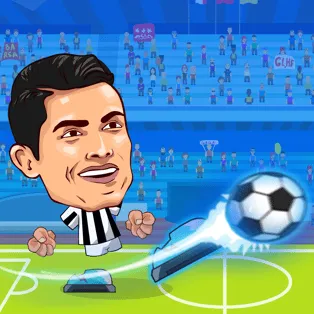Demon Slayer: Kimetsu no Yaiba Manga has captivated manga and anime fans worldwide with its compelling characters and intricate storylines. Among the series’ most intriguing villains is Akaza, the Upper Moon Three demon whose tragic backstory adds layers of complexity to his character. This article delves into Akaza’s past, exploring how his human life shaped the fearsome demon he became.
Akaza’s Origins as Hakuji
Before becoming the powerful Upper Moon Three, Akaza was a human named Hakuji. Born into poverty during Japan’s tumultuous Edo period, Hakuji faced immense hardship from a young age. His mother died when he was young, leaving him to care for his critically ill father. To obtain medicine, Hakuji resorted to stealing, which led him down a dark path.
Despite his circumstances, Hakuji possessed incredible physical strength and fighting prowess. These skills caught the attention of Keizo, the owner of a local dojo, who took Hakuji under his wing. Under Keizo’s guidance, Hakuji honed his martial arts abilities and began to find purpose in life.
Love and Loss – The Tragedy That Shaped Akaza
Hakuji’s life took a positive turn when he fell in love with Keizo’s daughter, Koyuki. Their relationship blossomed, and Hakuji found happiness he had never known before. However, this period of joy was short-lived. A rival dojo, threatened by Hakuji’s growing reputation, poisoned the well water at Keizo’s dojo. This act of sabotage resulted in the deaths of Koyuki, Keizo, and many others.
Devastated by the loss of his loved ones and consumed by guilt for being unable to protect them, Hakuji spiraled into despair. He sought revenge against those responsible, brutally killing 67 people from the rival dojo. This act of vengeance marked a turning point in Hakuji’s life, setting him on the path to becoming the demon Akaza.
The Birth of a Demon
In his darkest moment, Hakuji encountered Muzan Kibutsuji, the progenitor of all demons in the Demon Slayer universe. Muzan, recognizing Hakuji’s potential, offered him the chance to become a demon. Hakuji, seeing no other way forward and driven by a desire for power to protect what he cared about, accepted Muzan’s offer.
This transformation marked the birth of Akaza, the Upper Moon Three demon. As a demon, Akaza’s already formidable fighting skills were enhanced to superhuman levels. He developed a unique Blood Demon Art called Destructive Death, which allowed him to create powerful shockwaves through his punches.
Akaza’s Philosophy and Motivations
Akaza’s past experiences as Hakuji deeply influenced his outlook and behavior as a demon. His obsession with strength and his disdain for those he perceives as weak stem from his inability to protect Koyuki and Keizo in his human life. This mindset drives Akaza to constantly seek out and challenge strong opponents, viewing it as the only way to give meaning to his existence.
Interestingly, Akaza refuses to eat women, a trait that sets him apart from other demons. This quirk is likely rooted in his love for Koyuki, representing a small part of his humanity that persists even in his demonic form.
The Clash with Rengoku
One of the most memorable moments in Demon Slayer involving Akaza is his battle with Kyojuro Rengoku, the Flame Hashira. This fight, which takes place on the Mugen Train, showcases Akaza’s immense power and his complex character. Despite acknowledging Rengoku’s strength, Akaza ultimately defeats him, offering to turn Rengoku into a demon rather than kill him outright.
Rengoku’s refusal and subsequent death at Akaza’s hands serve as a pivotal moment in the series, highlighting the stark contrast between the Demon Slayers’ unwavering resolve and the demons’ twisted worldview.
Redemption and Final Moments
Akaza’s story reaches its climax during his battle with Tanjiro Kamado and Giyu Tomioka in the Infinity Castle Arc. As the fight progresses, Tanjiro’s words and actions begin to stir long-buried memories within Akaza. The demon starts to recall fragments of his past life as Hakuji, including his love for Koyuki.
In a moment of clarity, Akaza realizes the futility of his pursuit of strength and the emptiness of his existence as a demon. This epiphany leads to a powerful and emotional scene where Akaza chooses to stop regenerating, effectively ending his own life. In his final moments, he sees visions of Koyuki and Keizo, suggesting a form of redemption and peace.
The Impact of Akaza’s Story on Demon Slayer
Akaza’s tragic backstory and complex character development contribute significantly to the depth and richness of the Demon Slayer manga. His journey from a troubled human to a powerful demon, and ultimately to a figure seeking redemption, exemplifies the series’ nuanced approach to its antagonists.
The revelation of Akaza’s past challenges readers to view him not just as a villain, but as a victim of circumstance and his own flawed choices. This complexity adds layers to the ongoing conflict between humans and demons in the Demon Slayer universe, blurring the lines between good and evil.
Furthermore, Akaza’s story serves as a poignant exploration of themes central to Demon Slayer, such as the nature of strength, the consequences of revenge, and the possibility of redemption even for those who have fallen into darkness.
Fan Reception and Cultural Impact
Akaza’s character and backstory have resonated strongly with Demon Slayer fans. His tragic past and internal struggles have made him one of the most popular and discussed characters in the series kimetsunoyaiba.org. Fan art, cosplay, and discussions about Akaza abound in manga and anime communities, testament to the impact of his story.
The complexity of Akaza’s character has also contributed to broader discussions about the nature of villainy in manga and anime. His story challenges readers to consider the circumstances that shape antagonists, encouraging a more nuanced view of good and evil in storytelling.
In conclusion, the tragic story of Akaza, from his origins as Hakuji to his final moments as Upper Moon Three, stands as one of the most compelling narratives in Demon Slayer. His journey of loss, transformation, and ultimate redemption adds depth to the series’ exploration of humanity, demons, and the blurred lines between them. As fans continue to engage with Demon Slayer, Akaza’s story remains a powerful reminder of the series’ ability to create complex, memorable characters that resonate long after the final page is turned.
We invite readers to share their thoughts and experiences with Akaza’s character in Demon Slayer. How has his story impacted your view of the series? What aspects of his past or personality do you find most compelling? Join the discussion and let us know your perspective on this unforgettable Upper Moon demon.





























